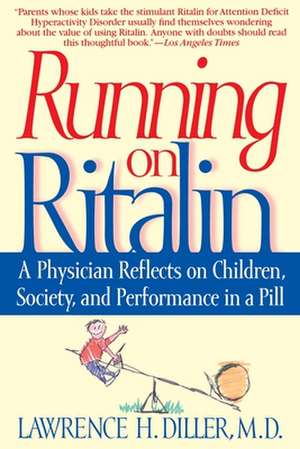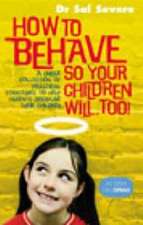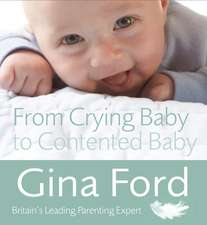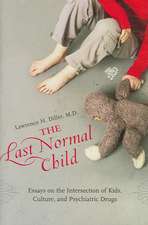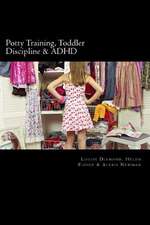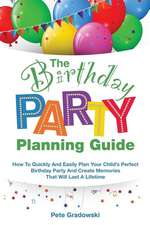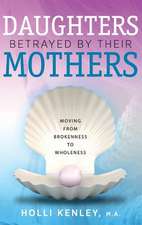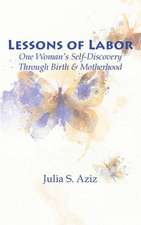Running on Ritalin: A Physician Reflects on Children, Society, and Performance in a Pill
Autor Lawrence H. Dilleren Limba Engleză Paperback – 30 apr 1999
In 1997 alone, nearly five million people in the United States were prescribed Ritalin--most of them young children diagnosed with attention deficit disorder. Use of this drug, which is a stimulant related to amphetamine, has increased by 700 percent since 1990. And this phenomenon appears to be uniquely American: 90 percent of the world's Ritalin is used here. Is this a cause for alarm--or simply the case of an effective treatment meeting a newly discovered need? Important medical advance--or drug of abuse, as some critics claim?
Lawrence Diller has written the definitive book about this crucial debate--evenhanded, wide-ranging, and intimate in its knowledge of families, schools, and the pressures of our speeded-up society. As a pediatrician and family therapist, he has evaluated hundreds of children, adolescents, and adults for ADD, and he offers crucial information and treatment options for anyone struggling with this problem.
Running on Ritalin also throws a spotlight on some of our most fundamental values and goals. What does Ritalin say about the old conundrums of nature vs. nurture, free will vs. responsibility? Is ADD a disability that entitles us to special treatment? If our best is not good enough, can we find motivation and success in a pill? Is there still a place for childhood in the performance-driven America of the late nineties?
From the Hardcover edition.
Preț: 142.79 lei
Nou
Puncte Express: 214
Preț estimativ în valută:
27.32€ • 28.53$ • 22.61£
27.32€ • 28.53$ • 22.61£
Carte disponibilă
Livrare economică 15-29 martie
Preluare comenzi: 021 569.72.76
Specificații
ISBN-13: 9780553379068
ISBN-10: 0553379062
Pagini: 404
Dimensiuni: 150 x 230 x 24 mm
Greutate: 0.58 kg
Editura: Bantam
ISBN-10: 0553379062
Pagini: 404
Dimensiuni: 150 x 230 x 24 mm
Greutate: 0.58 kg
Editura: Bantam
Notă biografică
Lawrence H. Diller, M.D., attended the College of Physicians and Surgeons, Columbia University, and trained at the renowned Child Study Unit of the University of California, San Francisco, and the Mental Research Institute of Palo Alto. In addition to professional publications, he has written for Family Therapy Networker and for the Hastings Center Report, where his 1996 article on Ritalin became national news. He practices in Walnut Creek, California, and lives nearby with his wife and two young sons.
From the Hardcover edition.
From the Hardcover edition.
Extras
Ritalin Ascendant: A Doctor's Dilemma
Something is awry, all right, but something not entirely medical in nature.
--Robert Coles, M.D., The Mind's Fate
It's midday at an elementary school in a comfortable American suburb. The lunch bell has just rung, and kids are noisily pouring out of classrooms to enjoy a brief recess in the schoolyard before mealtime.
Inside, next door to the principal's office, the school secretary is arranging bottles of medication on a tray. Scotch-taped to the tray are little photos of fourteen children, labeled with their names and keyed to the bottles. Though by now she pretty much knows who gets what, at the beginning of the school year this system helped make sure she didn't make mistakes--that each of the children taking Ritalin at school received the right pill and dose.
At least a dozen more youngsters among the 350 attending this school took the same medication at home before school but aren't required to take a midday dose. At a nearby school of similar size, the kids getting Ritalin are organized in ten-minute shifts because their number exceeds thirty. And this weekday ritual is carried out--with variations in the number of kids and the personnel responsible for handing out the pills--at schools across the United States.
Attention deficit disorder, or ADD--the condition for which the medication Ritalin is most commonly prescribed--was formerly called hyperactivity, as reflected in its alternative acronym: ADHD (attention deficit/hyperactivity disorder). Its diagnosis is based on problems with attention, focus, impulsivity, or overactivity at school or at home. Since 1990 the number of children and adults diagnosed with ADD has risen from about 900,000 to almost 5 million as we near the end of the decade. This figure--derived from the amount of medication prescribed for ADD--suggests a problem of epidemic proportions.
The sharp rise in ADD diagnosis is directly tied to another startling statistic--a 700 percent increase in the amount of Ritalin produced in the United States during the same time period. An increase of this magnitude in the use of a single medication is unprecedented for a drug that is treated as a controlled substance. Ritalin belongs to the class of drugs known as stimulants, and it is closely related to amphetamine. Although Ritalin has been around for a long time, some people are still surprised to learn that it is essentially a form of speed. Others do know this but believe that the drug has a paradoxical "calming" effect on children, an effect different from the one it produces in adults.
I vividly recall the first time I witnessed the change that some children exhibit when they start taking Ritalin. One of our patients at the Child Study Unit was a little boy who had never been able to play with a toy for more than a minute without throwing it aside and racing off. After Ritalin, he sat and played quietly for twenty minutes, while his parents and I marveled at the transformation.
Since then I have evaluated hundreds of children and adolescents for the diagnosis of ADD and treatment with Ritalin. Each individual and family has had a unique background, circumstances, and problems--but patterns have emerged. The most obvious pattern has been a distinct shift in the number and kinds of patients referred for an ADD evaluation. Over the first fifteen years of my practice, perhaps two dozen kids each year emerged from my office with an ADD diagnosis. Most of them fit the typical profile long associated with the condition: boys from six to twelve years old, extremely hyperactive and impulsive, functioning poorly (if at all) in a normal school situation. Many of these kids were quite out of control, and intervention with medication (usually Ritalin) was often needed to give other treatments a chance to work.
As of the early 1990s, however, my experience with families and ADD was clearly changing. The sheer volume of my cases went up dramatically, from two dozen a year to more than a hundred at present. I was evaluating more and more children under the age of five for the condition, as well as more children, teenagers, and adults with no signs of hyperactivity--people whose main problem was an inability to pay attention and get their work done. Many of this newer group of patients I judged to be less severely affected by ADD symptoms, and some I thought were doing fairly well.
Let me introduce some people from this later generation of patients whose situations raise questions for me about ADD and Ritalin:
Johnny Hester had just turned four when his parents brought him in. His headstrong behavior at home and in preschool had been driving his parents crazy and stressing his teacher, who suggested he might have ADD. Certainly the boy I saw in my office was very intense and determined, but he didn't race around constantly, and he played with toys almost normally. (He did raise a fuss when his parents asked him to put the toys away.) What I saw made me consider him only mildly impulsive and slightly distractible. And even without exploring his situation at school, I felt that family problems were contributing to his behavior. His parents, who had just reconciled after a separation, disciplined him inconsistently. They too were intense, both with full-time, high-pressure jobs. Having read about ADD, they insisted that I prescribe Ritalin on a trial basis.
Jenny Carter was a ten-year-old who worked too slowly and had trouble completing her assignments at school. Her parents complained that she didn't finish her chores at home, either. Sent to her room to clean up her toys, she'd be found dawdling or playing one of the games she was supposed to be putting away. Both parents worked and wanted her to help take responsibility for her two younger sisters. Jenny would stoically accept her punishments for incomplete work and missed chores, but she sounded sad about her situation when we met.
Jenny struck me as a bright, lovely child who was kind and thoughtful, had many friends, and wanted to please her parents and teacher. It just seemed as if her internal clock was set too slow for the rapid pace and the demands made on young people in late-twentieth-century America. She might have thrived, I imagined, had she been born earlier this century or before compulsory education was adopted. Now she was being evaluated as a candidate for Ritalin.
Gavin Donaldson was fifteen when I met him. Both his parents were Ph.D.'s, and they were concerned about Gavin; he wasn't getting the top grades they felt he could achieve if he overcame his "concentration problem." They worried about his college options, given his current grade-point average, which hovered just below B plus. Some of his teachers thought he was distractible, others that he was insufficiently motivated.
Gavin himself felt he was doing okay. He didn't mind getting a few B's and C's. He acknowledged that he was easily distracted from schoolwork; he could get A's if he cared more and tried harder, he told me, but he had other interests, such as music and his friends. He was sensitive to his parents' expectations and wanted to please them, but he wasn't enthusiastic about the idea of taking a medication that would affect his brain and personality. I suspected he felt that taking Ritalin would signal that he was inadequate as a person.
I thought the drug could probably improve his performance, focus him more on his schoolwork, perhaps even raise his motivation. His pleasure in doing better and winning his parents' approval might outweigh any loss of self-image caused by taking medication. On the other hand, his performance wasn't bad without it, and I believed his grades would improve once he found something that genuinely engaged him academically.
Karen McCormack, age thirty-three, single, and a highly talented architect, found me through some friends whose child I had treated. She was happy to learn that I evaluated patients for ADD, for she'd read a book on adult ADD and was convinced that she had it. Karen's sense of design was brilliant, but she struggled to read through reports and felt frustrated by her lack of advancement in the engineering firm where she worked. I thought she might also be depressed--she seemed very hard on herself. Karen was surprised when I didn't offer her medication right away, and resisted my idea that she go for psychological testing for her reading problem and career issues. In her view, I was simply being a roadblock to her getting Ritalin, which, she had learned via the media and the Internet, was the definitive treatment for her problem. She soon went in search of a more cooperative doctor.
In many cases, medication is surely called for. In many others, I have doubts. Offering Ritalin can help people who don't fit well into the here and now, I've assured myself. Inarguably, it can help certain kids adapt to an ever more challenging school environment. But I've wondered: Is there still a place for childhood in the anxious, downsizing America of the late 1990s? What if Tom Sawyer or Huckleberry Finn were to walk into my office tomorrow? Tom's indifference to schooling and Huck's "oppositional" behavior would surely have been cause for concern. Would I prescribe Ritalin for them, too?
The surge in Ritalin use tells us volumes about how we explain--and deal with--the problems many children and adults are having in coping with their world today. And the controversy over its use reflects the divide between two competing theories about behavior and performance problems. In one camp are those who believe such problems are chiefly attributable to a child's inherent brain chemistry. According to this view, medication is the best (sometimes the only) treatment. The other side posits that problem behaviors are the result of how children have been and are being treated. According to this view, children develop problems because they are subject to inappropriate or misguided expectations and responses. In other words, there is nothing inherently wrong with the child; what is needed are improvements in parenting, teaching, or the social environment.
The two positions represent the age-old "nature versus nurture" argument, and wherever it concerns children, this argument is played out intensely--because we love them dearly and because they do not yet control their own choices. We, their parents, teachers, doctors, and other advocates, must make the decisions that shape their future.
The belief that ADD is a neurological disease--the nature stance--prevails today among medical researchers and university teaching faculty. Its dominance is reflected in the leading journals of psychiatry, such as the American Journal of Psychiatry and the Journal of the Academy of Child and Adolescent Psychiatry. Its eloquent proponents include Joseph Biederman, chief of the Harvard Medical School Child Psychopharmacology Clinic, and Edward Hallowell and John Ratey, authors of the best-selling Driven to Distraction and its sequel, Answers to Distraction. Russell Barkley, of the University of Massachusetts Medical School, emphasizes that Ritalin is the definitive treatment for ADD and may need to be taken throughout the patient's lifetime. All of these experts acknowledge the influence of the child's world on his or her behavior, but often this strikes me as an afterthought or lip service. Outside the community of specialists, an audience that includes general physicians, the media, and patients has focused overwhelmingly on the researchers' clarion call: ADD is a neurological disease.
This explanation of ADD is also widely accepted within the leading self-help group for ADD: Children and Adults with Attention Deficit Disorder, or CHADD. In less than ten years, this organization has grown to encompass thirty-five thousand families and several hundred chapters around the country. The group's interests in promoting a neurological cause for ADD are understandable. For many years, parents were blamed by psychiatry for their children's problems, but with the new emphasis on biological causation, no one is to blame. Welcome relief from guilt, as well as the possibility of classifying ADD as a medical disorder to win insurance coverage and disability rights, drives CHADD to embrace a biological basis for ADD.
Along with many researchers, CHADD leaders feel that the 700 percent increase in Ritalin use since 1991 is simply a reflection of treatment catching up with the identification of a disease. According to Dr. Biederman, 10 percent of America's children have ADD--which would mean that current treatment rates should double. "Child psychiatry," he asserts, "is just catching up with adult psychiatry in its use of psychotropic medication."
Is America ready to have 10 percent of its children taking Ritalin? Because boys are disproportionately represented in the total population of kids diagnosed with ADD, this would mean giving the drug to one in six boys between the ages of five and twelve. This prospect seems not to faze some researchers. In their view, if a medication "works" on a certain condition, then we ought to use it.
There's no question that Ritalin can in most cases bring about short-term improvements in behavior. I and many others, however, find that enthusiasm about the drug's efficacy has obscured a larger, murkier picture. The prospect of Ritalin being given to so many children raises many questions. Among them: How safe is the drug for children and for adults, and what are its possible side effects? Does it help patients overcome their ADD symptoms over the long term? Is there a chance that Ritalin, by addressing symptoms, may mask some of the true causes of behavior problems? And what does the greatly expanded use of such a drug say about the institutions traditionally charged with the "nurture" of children: our homes and families, our schools, our health care system?
The ADD-Ritalin issue reveals something about the kind of society we are at the turn of the millennium--for no country besides America is experiencing such a rise in Ritalin use. It throws a spotlight on some of our most sensitive issues: what kind of parents we are, what kind of schools we have, what kind of health care is available to us. It brings into question our cultural standards for behavior, performance, and punishment; it reaches into the workplace, the courts, and the halls of Congress. It highlights the most basic psychological conundrum of nature versus nurture, and it raises fundamental philosophical questions about the nature of free will and responsibility.
Is there a message in this pill? If so, what is the Ritalin boom telling us? Ritalin seems to have become the drug for our day. As competition on every level intensifies, our preoccupations as a culture increasingly center on performance. And our children, whether we realize it or not, have been serving as a proving ground for the premise of medicating to enhance performance. Are we likely to see a time in the not-so-distant future when a large part of America will be running on Ritalin?
From the Hardcover edition.
Something is awry, all right, but something not entirely medical in nature.
--Robert Coles, M.D., The Mind's Fate
It's midday at an elementary school in a comfortable American suburb. The lunch bell has just rung, and kids are noisily pouring out of classrooms to enjoy a brief recess in the schoolyard before mealtime.
Inside, next door to the principal's office, the school secretary is arranging bottles of medication on a tray. Scotch-taped to the tray are little photos of fourteen children, labeled with their names and keyed to the bottles. Though by now she pretty much knows who gets what, at the beginning of the school year this system helped make sure she didn't make mistakes--that each of the children taking Ritalin at school received the right pill and dose.
At least a dozen more youngsters among the 350 attending this school took the same medication at home before school but aren't required to take a midday dose. At a nearby school of similar size, the kids getting Ritalin are organized in ten-minute shifts because their number exceeds thirty. And this weekday ritual is carried out--with variations in the number of kids and the personnel responsible for handing out the pills--at schools across the United States.
Attention deficit disorder, or ADD--the condition for which the medication Ritalin is most commonly prescribed--was formerly called hyperactivity, as reflected in its alternative acronym: ADHD (attention deficit/hyperactivity disorder). Its diagnosis is based on problems with attention, focus, impulsivity, or overactivity at school or at home. Since 1990 the number of children and adults diagnosed with ADD has risen from about 900,000 to almost 5 million as we near the end of the decade. This figure--derived from the amount of medication prescribed for ADD--suggests a problem of epidemic proportions.
The sharp rise in ADD diagnosis is directly tied to another startling statistic--a 700 percent increase in the amount of Ritalin produced in the United States during the same time period. An increase of this magnitude in the use of a single medication is unprecedented for a drug that is treated as a controlled substance. Ritalin belongs to the class of drugs known as stimulants, and it is closely related to amphetamine. Although Ritalin has been around for a long time, some people are still surprised to learn that it is essentially a form of speed. Others do know this but believe that the drug has a paradoxical "calming" effect on children, an effect different from the one it produces in adults.
I vividly recall the first time I witnessed the change that some children exhibit when they start taking Ritalin. One of our patients at the Child Study Unit was a little boy who had never been able to play with a toy for more than a minute without throwing it aside and racing off. After Ritalin, he sat and played quietly for twenty minutes, while his parents and I marveled at the transformation.
Since then I have evaluated hundreds of children and adolescents for the diagnosis of ADD and treatment with Ritalin. Each individual and family has had a unique background, circumstances, and problems--but patterns have emerged. The most obvious pattern has been a distinct shift in the number and kinds of patients referred for an ADD evaluation. Over the first fifteen years of my practice, perhaps two dozen kids each year emerged from my office with an ADD diagnosis. Most of them fit the typical profile long associated with the condition: boys from six to twelve years old, extremely hyperactive and impulsive, functioning poorly (if at all) in a normal school situation. Many of these kids were quite out of control, and intervention with medication (usually Ritalin) was often needed to give other treatments a chance to work.
As of the early 1990s, however, my experience with families and ADD was clearly changing. The sheer volume of my cases went up dramatically, from two dozen a year to more than a hundred at present. I was evaluating more and more children under the age of five for the condition, as well as more children, teenagers, and adults with no signs of hyperactivity--people whose main problem was an inability to pay attention and get their work done. Many of this newer group of patients I judged to be less severely affected by ADD symptoms, and some I thought were doing fairly well.
Let me introduce some people from this later generation of patients whose situations raise questions for me about ADD and Ritalin:
Johnny Hester had just turned four when his parents brought him in. His headstrong behavior at home and in preschool had been driving his parents crazy and stressing his teacher, who suggested he might have ADD. Certainly the boy I saw in my office was very intense and determined, but he didn't race around constantly, and he played with toys almost normally. (He did raise a fuss when his parents asked him to put the toys away.) What I saw made me consider him only mildly impulsive and slightly distractible. And even without exploring his situation at school, I felt that family problems were contributing to his behavior. His parents, who had just reconciled after a separation, disciplined him inconsistently. They too were intense, both with full-time, high-pressure jobs. Having read about ADD, they insisted that I prescribe Ritalin on a trial basis.
Jenny Carter was a ten-year-old who worked too slowly and had trouble completing her assignments at school. Her parents complained that she didn't finish her chores at home, either. Sent to her room to clean up her toys, she'd be found dawdling or playing one of the games she was supposed to be putting away. Both parents worked and wanted her to help take responsibility for her two younger sisters. Jenny would stoically accept her punishments for incomplete work and missed chores, but she sounded sad about her situation when we met.
Jenny struck me as a bright, lovely child who was kind and thoughtful, had many friends, and wanted to please her parents and teacher. It just seemed as if her internal clock was set too slow for the rapid pace and the demands made on young people in late-twentieth-century America. She might have thrived, I imagined, had she been born earlier this century or before compulsory education was adopted. Now she was being evaluated as a candidate for Ritalin.
Gavin Donaldson was fifteen when I met him. Both his parents were Ph.D.'s, and they were concerned about Gavin; he wasn't getting the top grades they felt he could achieve if he overcame his "concentration problem." They worried about his college options, given his current grade-point average, which hovered just below B plus. Some of his teachers thought he was distractible, others that he was insufficiently motivated.
Gavin himself felt he was doing okay. He didn't mind getting a few B's and C's. He acknowledged that he was easily distracted from schoolwork; he could get A's if he cared more and tried harder, he told me, but he had other interests, such as music and his friends. He was sensitive to his parents' expectations and wanted to please them, but he wasn't enthusiastic about the idea of taking a medication that would affect his brain and personality. I suspected he felt that taking Ritalin would signal that he was inadequate as a person.
I thought the drug could probably improve his performance, focus him more on his schoolwork, perhaps even raise his motivation. His pleasure in doing better and winning his parents' approval might outweigh any loss of self-image caused by taking medication. On the other hand, his performance wasn't bad without it, and I believed his grades would improve once he found something that genuinely engaged him academically.
Karen McCormack, age thirty-three, single, and a highly talented architect, found me through some friends whose child I had treated. She was happy to learn that I evaluated patients for ADD, for she'd read a book on adult ADD and was convinced that she had it. Karen's sense of design was brilliant, but she struggled to read through reports and felt frustrated by her lack of advancement in the engineering firm where she worked. I thought she might also be depressed--she seemed very hard on herself. Karen was surprised when I didn't offer her medication right away, and resisted my idea that she go for psychological testing for her reading problem and career issues. In her view, I was simply being a roadblock to her getting Ritalin, which, she had learned via the media and the Internet, was the definitive treatment for her problem. She soon went in search of a more cooperative doctor.
In many cases, medication is surely called for. In many others, I have doubts. Offering Ritalin can help people who don't fit well into the here and now, I've assured myself. Inarguably, it can help certain kids adapt to an ever more challenging school environment. But I've wondered: Is there still a place for childhood in the anxious, downsizing America of the late 1990s? What if Tom Sawyer or Huckleberry Finn were to walk into my office tomorrow? Tom's indifference to schooling and Huck's "oppositional" behavior would surely have been cause for concern. Would I prescribe Ritalin for them, too?
The surge in Ritalin use tells us volumes about how we explain--and deal with--the problems many children and adults are having in coping with their world today. And the controversy over its use reflects the divide between two competing theories about behavior and performance problems. In one camp are those who believe such problems are chiefly attributable to a child's inherent brain chemistry. According to this view, medication is the best (sometimes the only) treatment. The other side posits that problem behaviors are the result of how children have been and are being treated. According to this view, children develop problems because they are subject to inappropriate or misguided expectations and responses. In other words, there is nothing inherently wrong with the child; what is needed are improvements in parenting, teaching, or the social environment.
The two positions represent the age-old "nature versus nurture" argument, and wherever it concerns children, this argument is played out intensely--because we love them dearly and because they do not yet control their own choices. We, their parents, teachers, doctors, and other advocates, must make the decisions that shape their future.
The belief that ADD is a neurological disease--the nature stance--prevails today among medical researchers and university teaching faculty. Its dominance is reflected in the leading journals of psychiatry, such as the American Journal of Psychiatry and the Journal of the Academy of Child and Adolescent Psychiatry. Its eloquent proponents include Joseph Biederman, chief of the Harvard Medical School Child Psychopharmacology Clinic, and Edward Hallowell and John Ratey, authors of the best-selling Driven to Distraction and its sequel, Answers to Distraction. Russell Barkley, of the University of Massachusetts Medical School, emphasizes that Ritalin is the definitive treatment for ADD and may need to be taken throughout the patient's lifetime. All of these experts acknowledge the influence of the child's world on his or her behavior, but often this strikes me as an afterthought or lip service. Outside the community of specialists, an audience that includes general physicians, the media, and patients has focused overwhelmingly on the researchers' clarion call: ADD is a neurological disease.
This explanation of ADD is also widely accepted within the leading self-help group for ADD: Children and Adults with Attention Deficit Disorder, or CHADD. In less than ten years, this organization has grown to encompass thirty-five thousand families and several hundred chapters around the country. The group's interests in promoting a neurological cause for ADD are understandable. For many years, parents were blamed by psychiatry for their children's problems, but with the new emphasis on biological causation, no one is to blame. Welcome relief from guilt, as well as the possibility of classifying ADD as a medical disorder to win insurance coverage and disability rights, drives CHADD to embrace a biological basis for ADD.
Along with many researchers, CHADD leaders feel that the 700 percent increase in Ritalin use since 1991 is simply a reflection of treatment catching up with the identification of a disease. According to Dr. Biederman, 10 percent of America's children have ADD--which would mean that current treatment rates should double. "Child psychiatry," he asserts, "is just catching up with adult psychiatry in its use of psychotropic medication."
Is America ready to have 10 percent of its children taking Ritalin? Because boys are disproportionately represented in the total population of kids diagnosed with ADD, this would mean giving the drug to one in six boys between the ages of five and twelve. This prospect seems not to faze some researchers. In their view, if a medication "works" on a certain condition, then we ought to use it.
There's no question that Ritalin can in most cases bring about short-term improvements in behavior. I and many others, however, find that enthusiasm about the drug's efficacy has obscured a larger, murkier picture. The prospect of Ritalin being given to so many children raises many questions. Among them: How safe is the drug for children and for adults, and what are its possible side effects? Does it help patients overcome their ADD symptoms over the long term? Is there a chance that Ritalin, by addressing symptoms, may mask some of the true causes of behavior problems? And what does the greatly expanded use of such a drug say about the institutions traditionally charged with the "nurture" of children: our homes and families, our schools, our health care system?
The ADD-Ritalin issue reveals something about the kind of society we are at the turn of the millennium--for no country besides America is experiencing such a rise in Ritalin use. It throws a spotlight on some of our most sensitive issues: what kind of parents we are, what kind of schools we have, what kind of health care is available to us. It brings into question our cultural standards for behavior, performance, and punishment; it reaches into the workplace, the courts, and the halls of Congress. It highlights the most basic psychological conundrum of nature versus nurture, and it raises fundamental philosophical questions about the nature of free will and responsibility.
Is there a message in this pill? If so, what is the Ritalin boom telling us? Ritalin seems to have become the drug for our day. As competition on every level intensifies, our preoccupations as a culture increasingly center on performance. And our children, whether we realize it or not, have been serving as a proving ground for the premise of medicating to enhance performance. Are we likely to see a time in the not-so-distant future when a large part of America will be running on Ritalin?
From the Hardcover edition.
Recenzii
"A vitally important topic--and a constructive, hopeful message."
--Daniel Goleman, Ph.D.
"Running on Ritalin describes in vivid detail the performance pressures on America's children, their parents, and teachers that result too often in a prescription for Ritalin--and nothing else."
--Ramon C. Cortines, Executive Director, Pew Network for Standards-Based Reform at Stanford University
"No parent who has ever considered medication use for their child should make the decision without first reading Running on Ritalin."
--Stanley Turecki, M.D., author of The Difficult Child and Normal Children Have Problems, Too
"Balanced and thoughtful, yet it sounds a powerful alarm."
--Kirkus Reviews
From the Hardcover edition.
--Daniel Goleman, Ph.D.
"Running on Ritalin describes in vivid detail the performance pressures on America's children, their parents, and teachers that result too often in a prescription for Ritalin--and nothing else."
--Ramon C. Cortines, Executive Director, Pew Network for Standards-Based Reform at Stanford University
"No parent who has ever considered medication use for their child should make the decision without first reading Running on Ritalin."
--Stanley Turecki, M.D., author of The Difficult Child and Normal Children Have Problems, Too
"Balanced and thoughtful, yet it sounds a powerful alarm."
--Kirkus Reviews
From the Hardcover edition.
